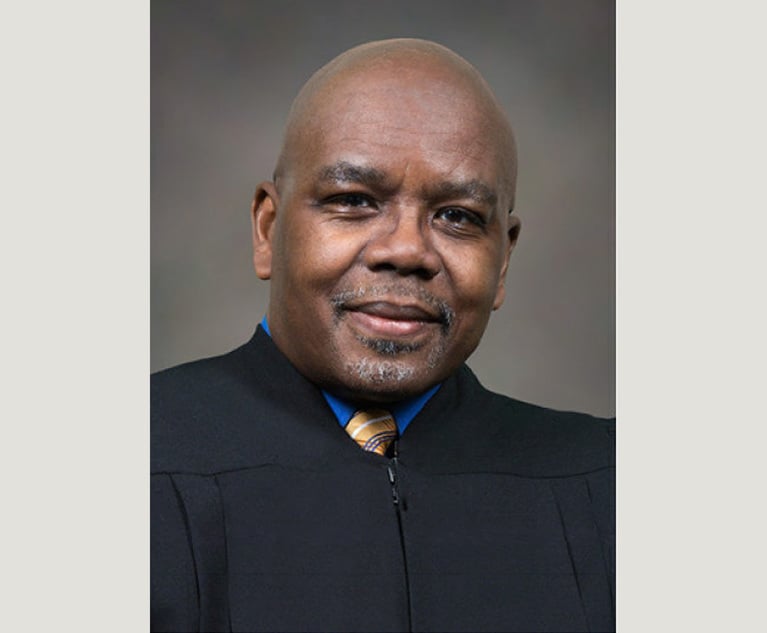EQB Seeks Public Comment on Drinking Water Rules for 2 'Forever Chemicals'
In the absence of definitive federal action to regulate PFAS, many states, including Pennsylvania, have in recent years taken steps to investigate, understand, and regulate PFAS.
April 07, 2022 at 01:26 PM
7 minute read
 Matthew C. Wood, left, and Mackenzie M. Moyer, right, of Babst Calland Clements & Zomnir. Courtesy photos
Matthew C. Wood, left, and Mackenzie M. Moyer, right, of Babst Calland Clements & Zomnir. Courtesy photos On Feb. 26, the Environmental Quality Board (EQB) took another meaningful step toward finalizing Pennsylvania's first state-established maximum contaminant levels (MCLs) for regulating contaminants in drinking water. On that date, the EQB published a proposed rule to amend 25 Pa. Code Ch. 109 (Safe Drinking Water) to establish MCLs for perfluorooctanoic acid (PFOA) and perfluorooctanesulfonic acid (PFOS), two of the most common PFAS. PFOA and PFOS are just two of a group of thousands of PFAS, manmade chemicals used in various consumer, commercial and industrial manufacturing processes since the 1940s. PFAS have commonly been used to imbue products with water-, stain-, and heat-resistant properties and as ingredients in aqueous film forming foams (AFFF) used to extinguish flammable liquid fires (e.g., those that might occur on airports or military bases). PFAS do not break down naturally in the environment and have thus been called "forever chemicals." Due to these properties and their ubiquitous nature, PFAS have been found in various environmental media, such as groundwater (including drinking water), plants, animals, and in humans, and evidence suggests that PFAS exposure can lead to adverse health effects. In the absence of definitive federal action to regulate PFAS, many states, including Pennsylvania, have in recent years taken steps to investigate, understand, and regulate PFAS.
This content has been archived. It is available through our partners, LexisNexis® and Bloomberg Law.
To view this content, please continue to their sites.
Not a Lexis Subscriber?
Subscribe Now
Not a Bloomberg Law Subscriber?
Subscribe Now
NOT FOR REPRINT
© 2025 ALM Global, LLC, All Rights Reserved. Request academic re-use from www.copyright.com. All other uses, submit a request to [email protected]. For more information visit Asset & Logo Licensing.
You Might Like
View All
Plaintiffs Seek Redo of First Trial Over Medical Device Plant's Emissions
4 minute read

'Serious Misconduct' From Monsanto Lawyer Prompts Mistrial in Chicago Roundup Case
3 minute read
Law Firms Mentioned
Trending Stories
Who Got The Work
J. Brugh Lower of Gibbons has entered an appearance for industrial equipment supplier Devco Corporation in a pending trademark infringement lawsuit. The suit, accusing the defendant of selling knock-off Graco products, was filed Dec. 18 in New Jersey District Court by Rivkin Radler on behalf of Graco Inc. and Graco Minnesota. The case, assigned to U.S. District Judge Zahid N. Quraishi, is 3:24-cv-11294, Graco Inc. et al v. Devco Corporation.
Who Got The Work
Rebecca Maller-Stein and Kent A. Yalowitz of Arnold & Porter Kaye Scholer have entered their appearances for Hanaco Venture Capital and its executives, Lior Prosor and David Frankel, in a pending securities lawsuit. The action, filed on Dec. 24 in New York Southern District Court by Zell, Aron & Co. on behalf of Goldeneye Advisors, accuses the defendants of negligently and fraudulently managing the plaintiff's $1 million investment. The case, assigned to U.S. District Judge Vernon S. Broderick, is 1:24-cv-09918, Goldeneye Advisors, LLC v. Hanaco Venture Capital, Ltd. et al.
Who Got The Work
Attorneys from A&O Shearman has stepped in as defense counsel for Toronto-Dominion Bank and other defendants in a pending securities class action. The suit, filed Dec. 11 in New York Southern District Court by Bleichmar Fonti & Auld, accuses the defendants of concealing the bank's 'pervasive' deficiencies in regards to its compliance with the Bank Secrecy Act and the quality of its anti-money laundering controls. The case, assigned to U.S. District Judge Arun Subramanian, is 1:24-cv-09445, Gonzalez v. The Toronto-Dominion Bank et al.
Who Got The Work
Crown Castle International, a Pennsylvania company providing shared communications infrastructure, has turned to Luke D. Wolf of Gordon Rees Scully Mansukhani to fend off a pending breach-of-contract lawsuit. The court action, filed Nov. 25 in Michigan Eastern District Court by Hooper Hathaway PC on behalf of The Town Residences LLC, accuses Crown Castle of failing to transfer approximately $30,000 in utility payments from T-Mobile in breach of a roof-top lease and assignment agreement. The case, assigned to U.S. District Judge Susan K. Declercq, is 2:24-cv-13131, The Town Residences LLC v. T-Mobile US, Inc. et al.
Who Got The Work
Wilfred P. Coronato and Daniel M. Schwartz of McCarter & English have stepped in as defense counsel to Electrolux Home Products Inc. in a pending product liability lawsuit. The court action, filed Nov. 26 in New York Eastern District Court by Poulos Lopiccolo PC and Nagel Rice LLP on behalf of David Stern, alleges that the defendant's refrigerators’ drawers and shelving repeatedly break and fall apart within months after purchase. The case, assigned to U.S. District Judge Joan M. Azrack, is 2:24-cv-08204, Stern v. Electrolux Home Products, Inc.
Featured Firms
Law Offices of Gary Martin Hays & Associates, P.C.
(470) 294-1674
Law Offices of Mark E. Salomone
(857) 444-6468
Smith & Hassler
(713) 739-1250





